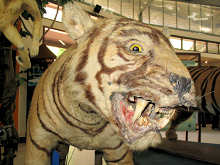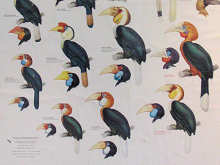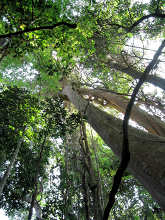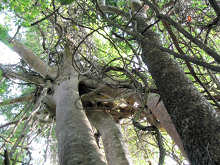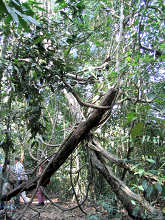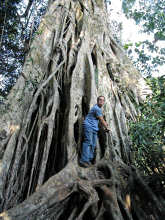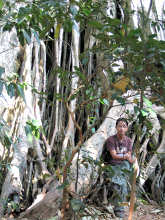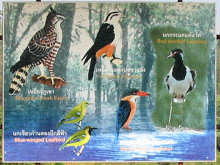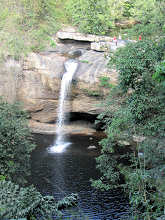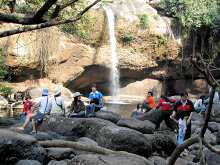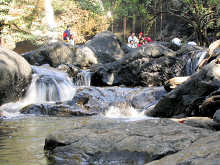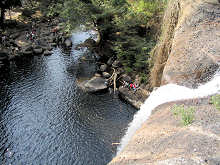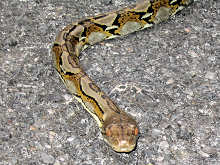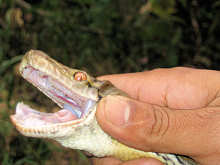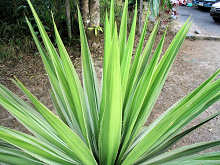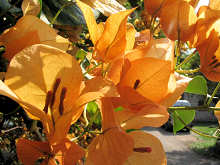|
|
|
|
Park museum |
 Different kinds of hornbills
|
 jungle walk 1
|
 jungle walk 2
|
 jungle walk 3
|
jungle walk 4
|
 jungle walk 5
|
 bird poster
|
 waterfall 1
|
 waterfall 2
|
|
waterfall 3
|
 waterfall 4
|
|
|
 snake crossing street
|
snake 2
|
 agave
|
 flowers in guesthouse garden
|
About Khao Yai
This was only a short visit from Bangkok, a good destination to escape the city for a couple of days.
Khao Yai is Thailand's oldest National Park. It was designated on the 18th September 1962. At 2,168 km it is the largest National Park in Thailand. Located within the Dongrek Mountain Range, Khao Yai's elevation ranges from 200 to 1351 m above sea level (Khao Rom).
History of Khao Yai, in 1902, 30 families from the south if Khao Yai moved into the Khao Yai hills. They farmed rice, hunted wildlife and collected forest products. The present grasslands along the road near the Head Quarters (HO) area are evidence of these villages and farms. In 1932 when Thailand became a Constitutional Monarchy, the government closed Khao Yai because the area had become a hideout for political criminals. In 1959 His Excellency Field Marshall Sarit Thanarat, then Prime Minister, asked the Agriculture and Cooperatives Department and the Department of Interior to look into the setting up of a National Park's System. In 1962 Khao Yai became the 1st National Park under the National Park Act of 1961. It is managed by the Royal Forest Department.
Topography
Khao Yai National Park consists of complicated mountains such as Khao Rom, the highest about 1,351 meters, Khao Lam about 1,326 meters, Khao Keaw about 1,292 meters, Khao Sam Yod about 1,142 meters, Khao Far Pha about 1,078 meters, Khao Kampang about 875 meters, Khao Samor Poon about 805 meters and Khao Kaew about 802 meters above sea level. Moreover, the area has vastly grassy field alternating with productive forest. The north and the east part are smoothly sloping down, while the south and the west part are rising up. The area is the source of five main rivers as follows.
(1) Prachin Buri River and
(2) Nakhon Nayok River situated in the south part and important for local agriculture and economy, meet each other in Chachoengsao District to become Bangpakong River go to the Gulf of Thailand.
(3) Lam Ta Kong River and
(4) Praplerng River, in the north part, go to maintain the agriculture of Korat Plateau and meet Moon River, the main river of Southern Isan that goes to Khong River.
(5) Muag Lek Stream, located in the northwest part and going to Pasak River in Muag Lek District, is valuable for local agriculture and cattle, and has water all the year round.
Climate
It is often cooler up here with an average temperature of 23 C.
Rainy Seson: May - October. Rains most days, the waterfalls are thus stunning. Can get clear cool weather.
Cold Seson: November - February. Gets as cold as 10 C at night you will want blankets. Again clear weather with great sunsets is common.
Hot Season: March - April. Hot and dry, but still cool compared to the plains, reaching the mid 30's!
Flora and Fauna
Tropical moist evergreen forest covers the central area of the Park. The rich diversity of plants (about 2000 species) astound the new-comer. Towering trees draped in mosses, climbers and epiphytes, tangled trunks of the strangling figs, drooping lianas and spiny rattan palms, delicate ferns, multicoloured lichens and an ever-changing array of fungi. There is aways something new to discover in the forest. Dry evergreen forest and dry deciduous forest covers the lower slopes of the Park and some of the higher sections. Bamboo is often an indicator of this drier forest. Hill evergreen forest covers the highest peak (Khao Kieow and Khao Rom). The trees are smaller here, and ferns, mosses and epiphytes abound. Grassland provides a welcome relief to all the forest. The Park mange (burn annually) the grassland to prevent trees from invading and to provide year round grazing for deer, elephants and guar. Wildlife is plentiful (70 mammal species, at least 74 species of herptile and thousands of invertebrates) but often hard to see. Sambar (large, gray-brown, often in groups) and barking deer (smaller, red-brown, usually in pairs or alone) are frequently seen in the grasslands or on spotlighting tours. Gibbons provide an excellent morning wake-up call with their mournful hoots. Quiet, patient walkers may catch a glimpse of these tree-living apes. Macaques are often seen on the roadsides. Elephants are sometimes spotted at salt-licks or on the road in the evenings and lucky (?) tourists may spot a tiger in the grasslands during the evenings. Civets, squirrels, porcupines, and wild pigs add a bit of variety. Snakes and lizards usually make their presence known by a rustle in the undergrowth as you are walking. If you see a snake, treat it as dangerous unless you know otherwise!! Geckos are frequently seen catching insects on building walls and ceilings. Cicadas never stop their scratchy hum. Look up and down and from side to side to spot the real movers and shakers in the forest - the insects and invertebrates.
BIRDS: We've got lots - over 320 species have been recorded. To the non-expert, birds are often just mysterious whistles, trills and calls, or a flutter of wings and a glimpse of colour. Patience is needed,good binoculars and a bird guide help. Roadsides, the old golf course, grasslands and the watching towers are good places to start . Hornbills are quite easy to spot, and hear the "gak gak gak" laugh of the Indian Pied (often seen in big flocks near Nong Pak Chi Tower in the evenings), or the deep resonant "gok…gok" of the Great Hornbill (usually seen in pairs or alone, the biggest of Khao Yai's hornbills) BATS: Nearly 1 million insecteating bats live in a cave on the edge of the Park. Drive about 3 km to the north of the Park Chong entrance gate and take a small track on the left-hand side just past a temple. A few hundred metres up here take a right-hand turn and follow the track to the end. You can climb the hill to the cave. Please do not enter the cave - you will disturb the bats. Allow them to come out for about 3 minutes before taking any flash photography.
Please visit also the Thai Gallery (link at bottom) and have a look at Chiang Mai, ladyboys, Silom Road, shopping malls, Bangkok nightlife, Nana Plaza, Chinatown, north Thailand, the islands and much more.
|
